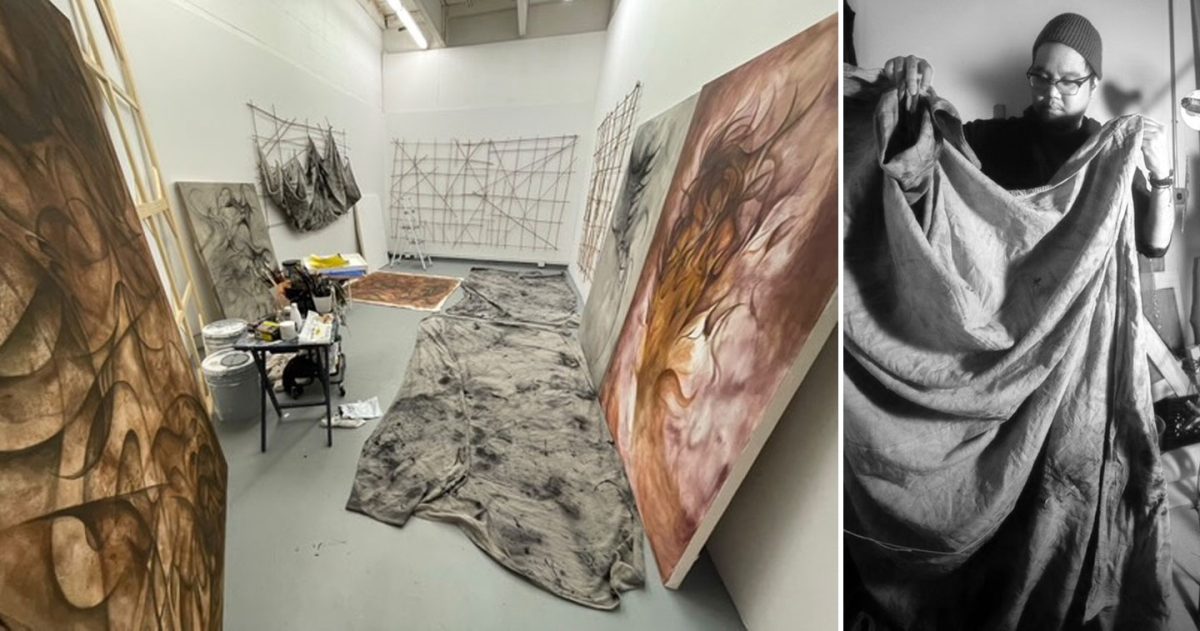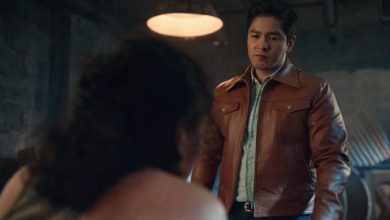MANILA, PHILIPPINES — Matt Odon Yrad brings his artistic practice home with Borador: Sky Skeletons, a solo exhibition at Gravity Art Space, Quezon City, opening February 21 to March 21. The exhibition is curated and designed by Sachet Projects. But what is the idea of home for Matt and how does that show in his art?
In a mostly Hiligaynon interview with Matt was asked: “Diin ka guid mapulí?” (Where would you really go home?) and that’s when he would come to share his roots tracing in Bacolod, Dumaguete, Talisay, the greater Los Angeles. In Hiligaynon, the word mapulí means to go home with the root word ulí or to return. Matt talked about how he felt lost when he first moved out of the country, he said: “there is always an ideal place, the romanticized, the idea of “mapulí”, constant navigation and renavigation, sometimes not geographic and not in time.”
As a result, Matt came to terms with these feelings by being strongly drawn to the idea of wayfinding in his creative work. His approach, although not intentional, strongly evokes images of Austronesian art. His past works look like abstract weapons, almost like head-hunting gears you would see in Austronesian and Southeast Asian cultures, as well as digital art of what could be precolonial deities and mythological creatures from these cultures. While his current works express abstractions on drop cloth draped on bamboo sticks that heavily referencing the imagery of Polynesian stick maps and much later a kite or borador. An abstract sky map.
Borador in Hiligaynon can mean both a kite and a thread weaver or embroiderer, while in Tagalog it can mean a draft of a sketch or an idea making it a fitting title for the show Borador: Sky Skeletons. The exhibition delves into themes of navigation, identity, and belonging, using abstract forms to represent both physical and existential journeys. Matt’s creative journey is an exploration with no final destination in sight. Matt feels his way through his creative work with instinct, almost as if he finds his way with stick maps and sketches of interconnected routes instead of following a printed map. His approach to art-making is deeply intuitive, guided more by impulses with a little negotiation with his formal art education, cultural influences, and pop culture references. Matt’s creative process looks at navigating from his inner world to his outer world, rather than predefined forms or techniques.
It manifests in the way Matt breaks down the frame, making it reminiscent of an image of a kite about to take flight — as if the abstract art work is not caged by the frame, but as an additional embellishment to fortify the work. Much like a kite sailing free, while tethered and grounded to its roots. The drop cloth is used because it looks like an organic element and hanging from bamboo frames gives it an impression that the image is not confined by the frame. The abstract art on the canvases are filled with contrasting sharp and “blob” images according to Matt, reminding him of wildlife. It has elements of what looks like bones and skin which adds texture to the abstraction, giving the impression of carcasses hanging out to dry.
Matt, through his art, is also his own historian and bard. His works look almost like an artifact, not as historical evidence but a physical manifestation of Matt’s history. The art works anchor his cultural roots, yet it does not attempt to be tied down by them. Instead, it reflects a journey of wayfinding, an ongoing navigation between his past, his present, and his future. The intersection of the archaic and modern, may seem like putting disparate elements into a cohesive expression but it is not. All of these references align with Matt’s history.
That is why Matt’s work does not feel limited like pre-colonial Filipino nostalgia or any other traditional art, instead Matt also adds a lot of modern and pop culture elements to his creative output. Matt enjoys science fiction and virtual gaming, specifically he says that he is most influenced by the works of Mike Mignola of Hellboy, Alejandro Jodorwsky of Incal and Matabarons, Ursula K. Le Guin, Frank Herber, which adds a richer layer of world building and a hint of original character style to his works. As Matt enjoys science fiction, it is his way to make the improbable as a possibility.
This defiance of the expectation of the traditional art form shows how Matt is not trying to make monuments, but more of an altar. A place for gathering. Matt mentions that he is not making Babylon or a church, where people try to unite and reach the heavens as a metaphor for trying to write the “universal” diaspora experience, but more of a unique experience that reflects many stories. Matt said: “This idea of making a ritual space for spirit to exist and just hang out, something like a non-denominational place, not untouchable but activated.” This is Matt’s rejection of limiting and even oppressive monolithic structures while embracing a more fluid, personal understanding of self. He is not trying to take over the divine but more like locating it in his works.
While many artists use their work to wrestle with the internal contradictions of the diasporic experience, Matt’s life and by consequence, his art is a compelling testament to the fluidity and dynamism of identity that results from constant migration. His life having roots in the Filipino diaspora, informs his work but does not limit it to that. As a child of economic refugees — Matt moved with his parents to California during the Erap years and later went back to Bacolod City to finish his Bachelors in Fine Arts. He went back to the United States Later in his adulthood to finish his masters in Visual Arts at the Claremont Graduate University, Matt is not defined by a desire to flatten his experiences into a simple, linear narrative to accommodate a Western idea of the diaspora or promote the idea of a single national identity.
Borador: Sky Skeletons captures Matt’s art perfectly. Like a kite, it drifts freely, sailing to the wind while staying tethered, grounded, and deeply connected to its roots. This powerful and distinct visual metaphor embodies a strong postcolonial voice. Matt’s Borador journey, like his art, is far from over with countless more stories to tell and explore.










